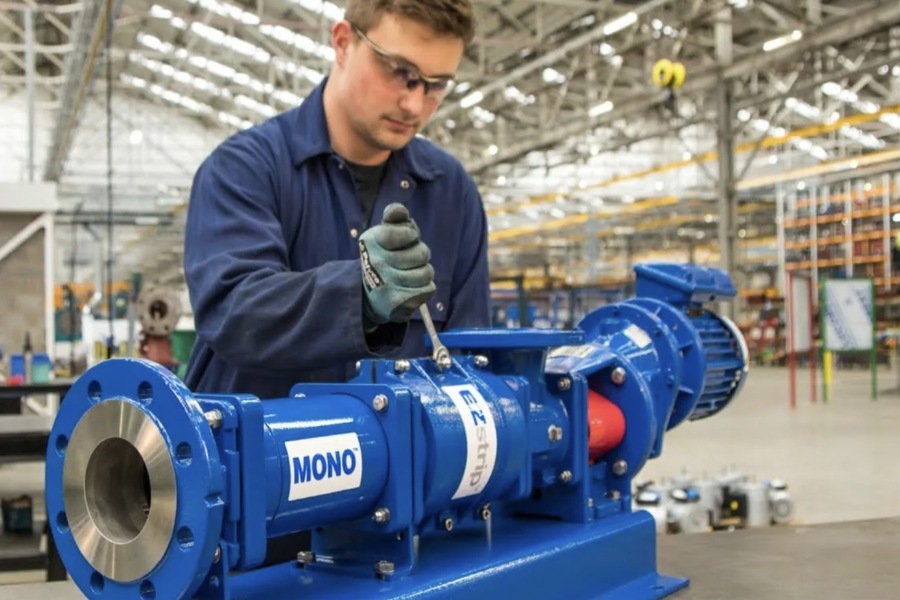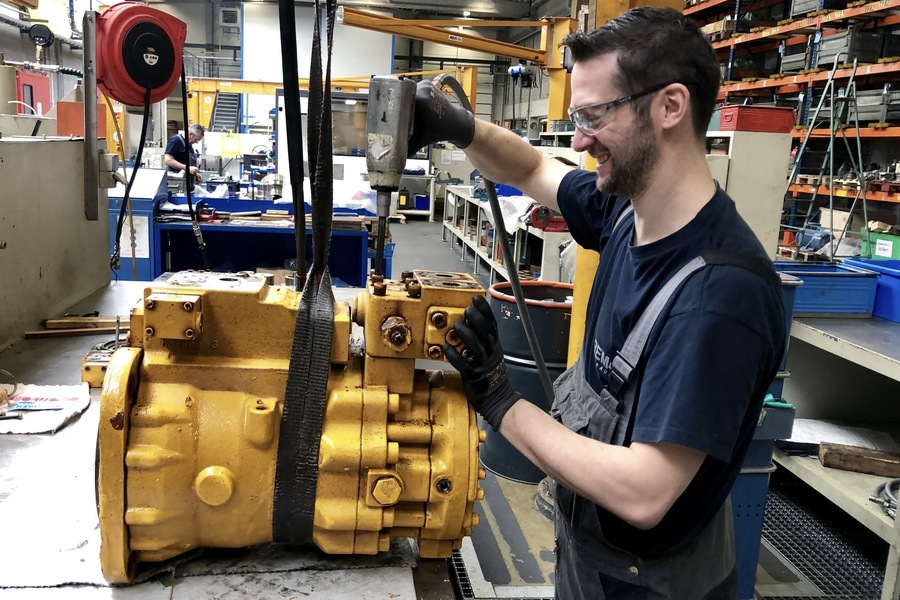The United Arab Emirates (UAE) relies heavily on desalination and water distribution networks to meet its growing water demands. As the nation’s population and industrial activities continue to expand, maintaining the efficiency and reliability of these systems is critical. Pumps are integral components in these networks, enabling the movement of large volumes of water. However, operational wear and tear, along with the harsh environmental conditions, can reduce their efficiency over time. Regular pump overhaul is a crucial maintenance practice that helps restore pump performance, ensuring the efficiency and reliability of desalination and water distribution networks in the UAE.
Importance of Pump Efficiency in Desalination and Water Distribution
When it comes to desalination and water distribution networks, efficient pump operation plays a crucial role. It significantly influences energy consumption, operational costs, and the rates at which water is produced. Desalination plants rely on pumps to effectively pressurize water as it flows through membranes, playing a crucial role in the separation of salt and impurities from the water. Pumps that aren’t operating at their best can really drive up energy usage and cut down on water output, which ultimately raises the costs associated with producing water. In the realm of water distribution networks, pumps play a crucial role in maintaining pressure and ensuring a consistent supply of water. Keeping things running smoothly with regular pump overhauls is essential for ensuring sustainability and cost-effectiveness in these operations.
Factors Affecting Pump Efficiency in the UAE
The UAE’s unique environmental conditions pose several challenges to pump efficiency. High temperatures, saline air, and elevated humidity levels contribute to the accelerated wear and tear of pump components. This can lead to issues such as seal degradation, corrosion, and increased friction, which reduce overall efficiency. Additionally, high salinity levels in desalination plants increase the risk of scaling and fouling within pumps, further impacting performance. Understanding these factors and addressing them through targeted overhaul strategies is essential for maintaining efficient pump operation in the UAE’s harsh environment.
The Role of Pump Overhaul in Restoring Efficiency
Pump overhaul is a comprehensive maintenance procedure that involves disassembling the pump, inspecting all components, and replacing or refurbishing worn-out parts. This process helps restore the pump to its original condition, ensuring that it operates at optimal efficiency. During an overhaul, technicians identify issues such as misalignment, imbalance, or component degradation that can negatively affect performance. By addressing these problems, the overhaul reduces friction, improves hydraulic performance, and enhances the overall efficiency of the pump. Regular pump overhaul also prevents unexpected breakdowns, contributing to the reliability and longevity of desalination and water distribution networks.

Components Addressed During Pump Overhaul
Several critical components are inspected and serviced during a pump overhaul:
Impellers: Impellers are responsible for creating the flow of water. Over time, they can become eroded or clogged, reducing efficiency. Replacing or cleaning impellers restores optimal flow characteristics.
Seals and Bearings: Seals prevent leakage, while bearings support rotating components. Worn seals or bearings can lead to increased friction and energy consumption. Replacing these parts reduces resistance and improves efficiency.
Shafts and Couplings: Misalignment or wear in shafts and couplings can cause vibrations and reduced performance. Realigning or replacing these components ensures smooth operation.
Casings and Liners: Casings and liners protect the internal components of the pump. Addressing any signs of corrosion or wear during an overhaul helps maintain structural integrity and efficiency.
Energy Savings Through Pump Overhaul
One of the most significant benefits of pump overhaul is the potential for energy savings. As pumps age and components degrade, they require more energy to deliver the same output. This increase in energy consumption can significantly elevate operational costs, especially in energy-intensive processes like desalination. A well-executed pump overhaul reduces friction and restores optimal hydraulic performance, leading to lower energy usage. According to industry estimates, regular pump overhaul can result in energy savings of up to 20%, depending on the extent of wear and the efficiency improvements achieved.
Extending Pump Lifespan and Reducing Maintenance Costs
Regular pump overhaul not only improves efficiency but also extends the lifespan of pumps. By identifying and addressing wear and tear early, an overhaul prevents minor issues from escalating into major failures that could require costly replacements or repairs. This proactive maintenance approach reduces the need for unplanned downtime and enhances the overall reliability of the system. In the long run, investing in regular pump overhaul translates into reduced total maintenance costs and improved return on investment for desalination and water distribution networks in the UAE.
Impact of Pump Overhaul on Water Quality in Distribution Networks
In water distribution networks, pumps play a crucial role in maintaining water quality by preventing stagnation and ensuring proper flow. Inefficient or malfunctioning pumps can cause pressure fluctuations, leading to issues such as backflow or contamination. Regular pump overhaul helps maintain consistent pressure and flow rates, thereby preserving water quality throughout the distribution network. This is particularly important in the UAE, where ensuring high-quality water supply is a priority for both residential and industrial consumers. A well-maintained pump system minimizes the risk of water quality issues, contributing to public health and safety.
Implementing Predictive Maintenance for Pump Overhaul
Predictive maintenance is an advanced approach that uses real-time data and monitoring technologies to determine the optimal time for pump overhaul. By analyzing parameters such as vibration, temperature, and flow rates, predictive maintenance helps identify signs of wear before they lead to efficiency losses or failures. This strategy enables operators to schedule overhauls based on the actual condition of the pump rather than on a fixed schedule, minimizing downtime and ensuring that maintenance activities are carried out when they are most needed. Implementing predictive maintenance in the UAE’s desalination and water distribution networks can further enhance the benefits of regular pump overhaul.

Strategies for Effective Pump Overhaul in Desalination Plants
Given the unique challenges of desalination plants in the UAE, effective pump overhaul strategies are essential for maintaining efficiency and reliability. These strategies include:
Using Corrosion-Resistant Materials
Pumps exposed to saline water are highly susceptible to corrosion. Using corrosion-resistant materials for components such as impellers, shafts, and seals helps reduce degradation and improve durability.
Applying Protective Coatings
Protective coatings such as epoxy or ceramic can be applied to pump components to provide an additional layer of protection against corrosion and scaling.
Upgrading to High-Efficiency Seals and Bearings
Advanced seals and bearings designed for high-efficiency operation can reduce friction and energy consumption, further enhancing pump performance.
Importance of Partnering with Specialized Service Providers
For pump overhaul to be effective, it is important to partner with specialized service providers who have expertise in handling complex systems used in desalination and water distribution networks. These providers have the necessary knowledge, tools, and experience to conduct thorough inspections and implement the appropriate refurbishment or replacement measures. Working with reputable service providers ensures that the overhaul process is carried out to the highest standards, maximizing the benefits of improved efficiency and reliability.
Conclusion
Pump overhaul is a critical maintenance practice for ensuring the efficiency and reliability of the UAE’s desalination and water distribution networks. By restoring pumps to their optimal condition, overhauls help reduce energy consumption, extend the lifespan of equipment, and maintain water quality. Regular pump overhaul, combined with predictive maintenance strategies, enables operators to address wear and tear proactively, minimizing the risk of unexpected failures. In a region where water production and distribution are of utmost importance, implementing effective pump overhaul strategies is essential for sustaining the long-term efficiency and sustainability of these vital networks.

Baseball fan, shiba-inu lover, guitarist, reclaimed wood collector and doodler. Operating at the junction of art and programing to create not just a logo, but a feeling. I’m fueled by craft beer, hip-hop and tortilla chips.
